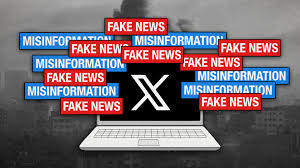
There are various risk vectors in the social media landscape as we head towards a turbulent political period.
Social Media Misinformation Set to Be Major Risk in 2024 Political Campaigns:
As the 2024 political campaigns ramp up, the specter of social media misinformation looms large, posing a significant risk to the integrity of electoral processes worldwide. Experts warn that the rapid dissemination of false information on platforms like Facebook, Twitter, and TikTok could distort public perception, manipulate voter behavior, and ultimately impact the outcome of elections.
The Scale of the Problem:
Misinformation on social media is not a new phenomenon. However, its scale and sophistication have grown exponentially. With billions of users, social media platforms have become fertile ground for the spread of false information, ranging from misleading news articles to deepfake videos and doctored images. The algorithms that drive these platforms often prioritize engagement over accuracy, inadvertently amplifying sensational and false content.
Impact on Democracy:
The potential impact of misinformation on democratic processes is profound. In previous election cycles, we have seen how false narratives can shape public opinion and influence voter turnout. For instance, during the 2016 US presidential election, Russian interference through social media campaigns sought to polarize voters and sow discord. Similar tactics have been observed in elections across Europe, Africa, and Asia.
In the 2024 elections, both domestic and foreign actors are expected to leverage misinformation to achieve their political goals. These efforts could range from undermining trust in electoral systems to discrediting candidates and spreading divisive social issues. The result is a more polarized and fragmented electorate, where rational debate is overshadowed by emotionally charged falsehoods.
Efforts to Combat Misinformation:
Recognizing the threat, social media companies have introduced measures to combat misinformation. Facebook, for example, has partnered with third-party fact-checkers to identify and flag false content. Twitter has implemented labels for misleading tweets and increased its efforts to suspend accounts that violate its policies. TikTok has also enhanced its content moderation practices to reduce the spread of false information.
Despite these efforts, challenges remain. The sheer volume of content generated daily makes it difficult to monitor and verify all information. Additionally, bad actors continuously evolve their tactics, making it harder for automated systems and human moderators to keep up.
The Role of Users:
Users play a crucial role in the fight against misinformation. Critical thinking and media literacy are essential tools for discerning truth from falsehood. Before sharing content, users should verify its source, check for corroborating information from reputable outlets, and be wary of sensational headlines that lack substantive evidence.
Educational initiatives aimed at improving digital literacy can also empower users to recognize and resist misinformation. Schools, community organizations, and governments can collaborate to provide resources and training to help individuals navigate the complex information landscape.
Also Read: Introduction Of Social Media
